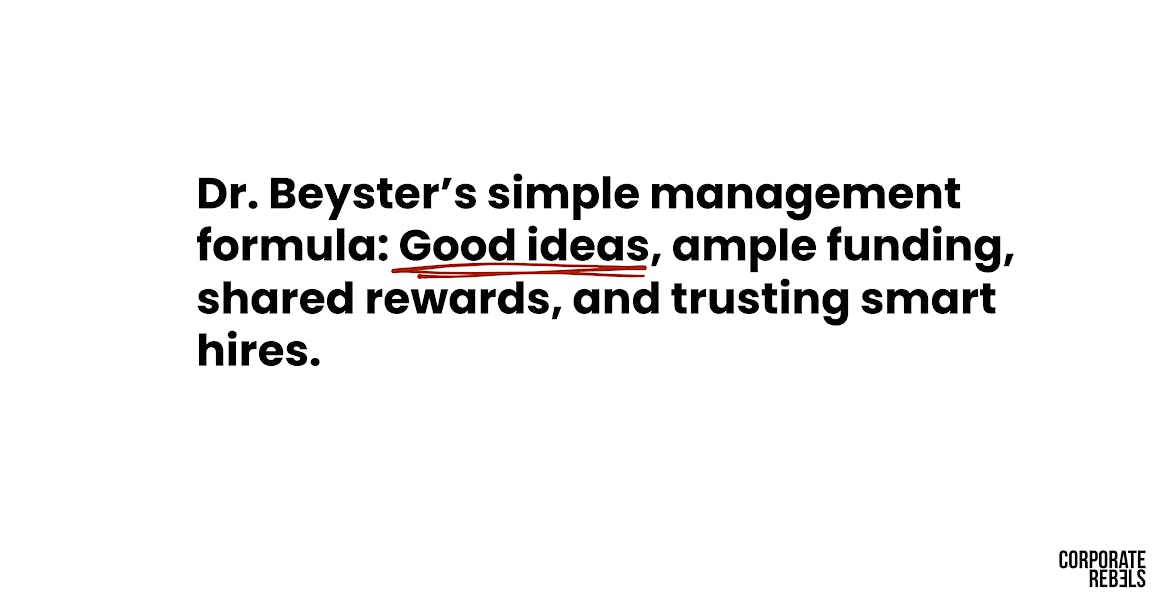The Power of Simplicity: A Simple Management Formula To Wild Success

Earlier last year, I was invited to the Kelso Workshop at Rutgers University in New Jersey by Prof. Joseph Blasi, the world's most renowned expert on employee ownership. During this conference, I learned about Dr. Beyster and the remarkable employee-owned company he built, Science Applications International Corporation (SAIC). It is a fascinating story that's definitely worth sharing.
Put people first
SAIC's story starts on February 3, 1969, in La Jolla—a small village on the rugged California coastline just North of San Diego. On this cold winter day, Dr. Beyster—then a 45-year-old scientist with a wife, three kids, and a Ph.D. in nuclear physics—decides to leave his comfortable middle-management position at a large American multinational to start his very own company: SAIC.
This decision will be the start of the ride of a lifetime. Over the next several years, Dr. Beyster grows SAIC into one of America's largest technology firms by following one simple mantra: put people first.
First and foremost a scientist, not an entrepreneur or a manager, Dr. Beyster follows his 'people first' instinct to engineer a simple management formula that leads him to success.
In his book The SAIC Solution, Dr. Beyster shares the basic lessons of his simple management formula that allowed him to build SAIC into a widely successful technology firm—one that was a good place to work while also making a fair profit and providing its customers with the highest-quality services and products.
Four lessons
The simple management formula of Dr. Beyster consists of the following four lessons, which he considered the most important business lessons that he learned during the course of his life:
1. Have a good idea
Dr. Beyster: "It all begins with a good idea. Without a good idea, you have nothing. Do your due diligence—check it with experts in the field to make sure it's as good as you think it is."
2. Secure enough funding
Dr. Beyster: "Make sure you have the funding necessary to execute your idea. I have seen far too many good ideas—and the company owners who had them—fail due to a lack of sufficient funding."
3. Share rewards with everyone
Dr. Beyster: "There needs to be an incentive system that rewards employees for doing something that helps the business in meaningful ways. We had promotions, bonuses, and the other standard employee incentives, but we also had widespread employee ownership, which I believe separated us from the rest of the pack."
4. Hire smart people and let go
Dr. Beyster: "Hire smart people and then allow them to make their own decisions without constantly looking over their shoulders or second-guessing them."

The power of simplicity
Although Dr. Beyster did not have a grandiose plan for its future, this simple management formula allowed him to grow SAIC from a small start-up with only three employees and just a few simple consulting contracts (in 1969) to America's largest employee-owned company with almost 40,000 employees and a revenue of $5.5 billion (in 2000).
Eventually, Dr. Beyster decided to retire as Chairman of SAIC in July 2004. Within 18 months after he left the company, the new leadership decided to IPO the company—transforming SAIC from its unique employee-owned nature into a public company. Unfortunately, this step fundamentally changed the progressive culture of the company and turned it rather traditional to this day.
Nevertheless, Dr. Beyster's lessons show us something important: the power of simplicity—something often forgotten in management.
In the near future, I will share more lessons about SAIC's case. It is highly inspirational how it once was.
And you can stay tuned by subscribing to our newsletter.


